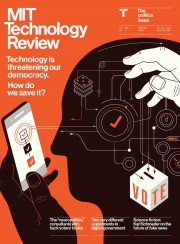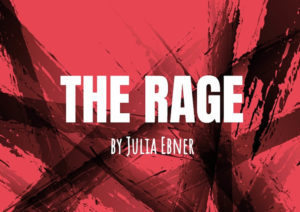Russia has tended to use online tools to cause confusion, manifest ethnic tensions and erode trust in democratic institutions. But to understand its information operations, it is important to understand the worldview the Kremlin promotes, say two leading analysts.
The country views itself as part of a direct conflict between two major civilizations: the Atlantic civilization, which stands for liberalism and the relentless pursuit of global dominance and comprises the United States, NATO and other western allies, and the Eurasian civilization, which stands for “a multipolar world” and promotes “true liberty” through ethnic nationalism, according to Timur Chabuk, Ph.D., director of intelligent information systems at Perceptronics Solutions Inc., and Adam Jonas, an intelligence analyst at Threat Tec LLC.
Because near-peer states such as Russia have demonstrated how much relatively small but well-coordinated capital investments can have disproportionate effects on an adversary, it is imperative the U.S. government rise to the occasion and utilize existing, often open-source tools and methodologies to tackle this threat, they write for The Cyber Edge:
 Social network analysis (SNA) is a social science method that maps and quantifies the relationships between human actors. Social media platforms are rich in data that can be analyzed to determine how people communicate and what words, memes or hashtags they share. SNA can quantitatively help identify who has direct influence online and who’s influencing the influencers. It can detect subgroups within a broader network that may represent social/ideological divides and discern if certain members of the network are disproportionately targeted or elevated by bot activity.
Social network analysis (SNA) is a social science method that maps and quantifies the relationships between human actors. Social media platforms are rich in data that can be analyzed to determine how people communicate and what words, memes or hashtags they share. SNA can quantitatively help identify who has direct influence online and who’s influencing the influencers. It can detect subgroups within a broader network that may represent social/ideological divides and discern if certain members of the network are disproportionately targeted or elevated by bot activity.- In addition, sentiment analysis algorithms, which characterize posts as exhibiting positive versus negative sentiments, can be applied to social media posts to assess the overall tone or disposition expressed in the data. …Sentiment identification is a challenging task; many studies show that even humans are often only 70 percent accurate. However, machine learning-based approaches, in which sentiment analysis engines are trained within specific domains rather than performing general sentiment analysis, have been shown to be effective….
- Machine learning techniques also can be used to analyze the behavioral dynamics of social media users and identify similar users. This can be helpful in identifying bot accounts that are coordinating messaging, and even multiple accounts that are being operated by the same information operations agents under false identities.
 “Much like the bots and other tools employed in Russia’s evolved IO, the capabilities to identify and potentially counter such attacks are fairly inexpensive and available now,” Chabuk and Jonas conclude. “Methodologies such as SNA, content analysis and behavioral analysis must be quickly leveraged … to adequately counter Russia and others who weaponize information.” RTWT
“Much like the bots and other tools employed in Russia’s evolved IO, the capabilities to identify and potentially counter such attacks are fairly inexpensive and available now,” Chabuk and Jonas conclude. “Methodologies such as SNA, content analysis and behavioral analysis must be quickly leveraged … to adequately counter Russia and others who weaponize information.” RTWT
Social media played a significant role in mobilizing right-wing extremist demonstrations in the Eastern German city of Chemnitz, The New York Times adds:
The Alternative for Germany garnered 27 percent in the eastern state of Saxony, where Chemnitz is located, in last year’s national election. Empowered by that success, far-right activists have been able to channel the fears and discontent of voters and, often using social media, mobilize crowds that a few years ago would have been unthinkable, one analyst said.
“This mix of far-right extremists and AfD voters was new,” said Hajo Funke, a political scientist at the Free University of Berlin and a veteran expert of the far right.
“We have a strong neo-Nazi scene in eastern Germany, but we also have a strong current of far-right extremism in all of Germany — not just in Parliament but in society,” said Matthias Quent, who runs an institute that studies democracy and civil society. That is why the far right is so self-confident, he said: “They think their day has come.”
 At a Friedrich-Ebert-Stiftung-supported meeting of a global international network of scientists, civil society activists, and public service affiliates organizing against right-wing extremism, Jacob Davey was among the speakers highlighting the tactics of alternative technology and digitalization. On occasion of the meeting that took place in May in the United States, FES Connect spoke with Davey, research manager at the Institute for Strategic Dialogue, on the state of right-wing extremism online and how to fight it.
At a Friedrich-Ebert-Stiftung-supported meeting of a global international network of scientists, civil society activists, and public service affiliates organizing against right-wing extremism, Jacob Davey was among the speakers highlighting the tactics of alternative technology and digitalization. On occasion of the meeting that took place in May in the United States, FES Connect spoke with Davey, research manager at the Institute for Strategic Dialogue, on the state of right-wing extremism online and how to fight it.
 Fast-paced technological changes and increased complexity of cyber threats are producing new opportunities and challenges in the field of cybersecurity, The German Marshall Fund adds. A meeting on “Transatlantic Perspectives on Cyber Diplomacy” will update the participants on the recent developments in the bilateral and global conversations about cyber diplomacy. This meeting is organized in the context of the EU Cyber Direct project, which supports EU cyber diplomacy efforts and consequently contributes to the development of a secure, stable and rules-based international order in cyberspace
Fast-paced technological changes and increased complexity of cyber threats are producing new opportunities and challenges in the field of cybersecurity, The German Marshall Fund adds. A meeting on “Transatlantic Perspectives on Cyber Diplomacy” will update the participants on the recent developments in the bilateral and global conversations about cyber diplomacy. This meeting is organized in the context of the EU Cyber Direct project, which supports EU cyber diplomacy efforts and consequently contributes to the development of a secure, stable and rules-based international order in cyberspace
Welcoming words
Dr. Ian Lesser, Vice President, The German Marshall Fund of the United States
Discussants
Michele G. Markoff, Deputy Coordinator for Cyber Issues, Office of the Coordinator for Cyber Affairs, Office of the Secretary of State, United States Department of State
Rory Domm, Acting Head of the Security Policy Unit, Security Policy Directorate, European External Action Service
Moderator
Julia Schuetze, Project Manager, Transatlantic Cyber Forum, Stiftung Neue Verantwortung
Closing words
Dr. Gustav Lindstrom, Director, EU Institute for Security Studies
September 10, 2018 | 4:30PM CEST
The German Marshall Fund of the United States
Rue de la Loi 155
1040 Brussels
Belgium







